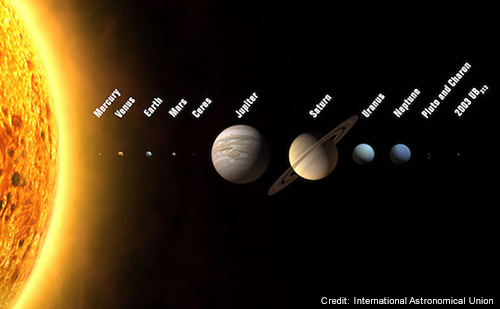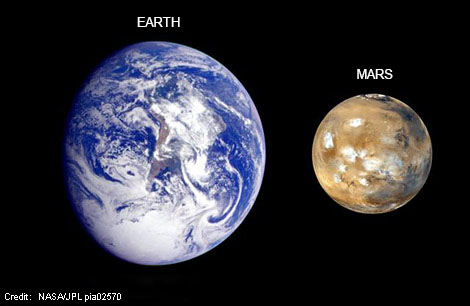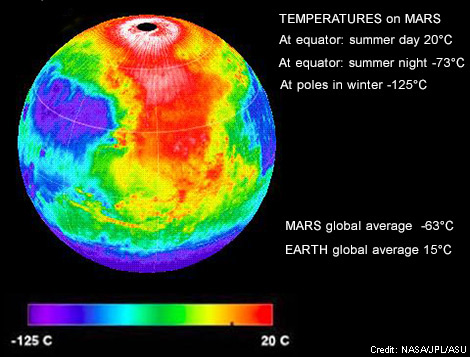
Planet MARS:
- is the fourth planet from the Sun
- is one of the 8 major planets*
- is named after the Roman god of war
- is the second smallest of the planets after Mercury
- is a so-called 'rocky' planet, like the 3 other innermost planets - Mercury, Venus and Earth
- has water ice and dry ice (solid carbon dioxide) around its N and S poles
- has two small moons, Phobos and Deimos
*Pluto, Ceres, Eris (formerly 2003 UB313) and some other small solar satellites are now termed dwarf planets
COMPARING EARTH and MARS
| PROPERTY | EARTH | MARS | Ratio: Mars to Earth |
|---|---|---|---|
| Diameter (km) | 12,756 | 6792 | Mars: half that of Earth |
| Mass (E mass unit) | 1.0 | 0.1 | Mars: one tenth that of Earth |
| Distance from Sun (million km) | 150 | 228 | Mars: about one and a half times that of Earth |
| Length of day(sol) (hours) | 24.0 | 24.7 | Mars: 42 minutes longer |
| Length of year (days/sols) | 365.25 | 687 | Mars: almost double |
| Axial tilt (degrees) | 23.4 | 25.2 | Very similar, creating seasons on both |
| Gravity (m per sec2) | 9.8 | 3.7 | Mars: less than 40 percent that on Earth |
| Surface air pressure (bars) | 1.0 | 0.006 | Mars: less than one hundredth that of Earth |
| Atmosphere (percentage by volume) | 78% nitrogen 21% oxygen 1% others |
96% carbon dioxide 2% nitrogen 2% others |
Completely different |

The total land surface areas of Earth and Mars are similar. Why?
About 70 percent of Earth is covered by oceans but Mars has none.

Cosmic radiation levels are much higher on Mars than Earth. Why?
Unlike Earth, Mars has no planet-wide magnetic field to deflect this radiation.
